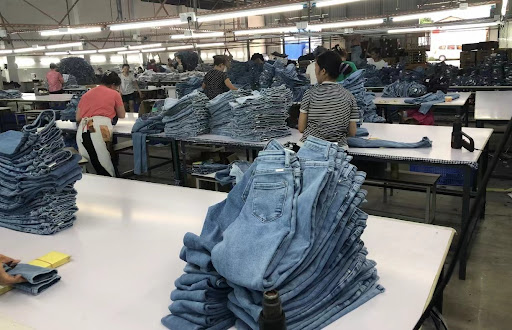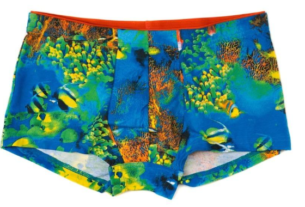Welcome to this comprehensive guide to the exploration of denim in America! In this blog, we’ll walk you through the entire process, step by step, so you can appreciate the effort that goes into making your favorite pair of jeans. From raw materials to the final product, you will gain an insight into the art and science behind denim production by the top denim manufacturers in usa.
Raw Materials
Cotton Selection
The journey of denim manufacturing begins with selecting the right cotton. Denim manufacturers carefully choose cotton with durability, breathability, and comfort. The cotton selection involves evaluating various varieties with a keen eye on factors such as fiber length and strength. The goal is to ensure that the cotton used is not only soft against your skin but also capable of withstanding the rigors of daily wear.
The Indigo Magic
Indigo dye gives denim its signature blue color. The process of indigo dyeing is an art in itself. First, the cotton yarns or fabric are dipped into an indigo bath, undergoing a fascinating transformation.
The magic lies in the oxidation process, where the yarns change from green to blue as they are exposed to the air. This unique dyeing technique not only imparts the iconic blue hue to your jeans but also creates the potential for that beautiful, worn-in appearance over time.You can also read A Look Into The Process Of Denim Manufacturing by Denim Manufacturers USA.
Spinning and Weaving
Spinning Cotton into Yarn
This transforms raw cotton into the thread that forms the fabric of your jeans. Spinning cotton into yarn is like weaving a story; it’s where individual cotton fibers come together to create strength and structure.
In this process, the cotton is carded and combed to remove impurities and align the fibers, making them suitable for spinning. The fibers are then drawn out and twisted together to form yarn, resulting in a strong and versatile material that will later become the backbone of your denim jeans.
Weaving the Denim Fabric
Weaving is where the magic begins. Denim manufacturers use specialized looms to create the characteristic twill weave that gives denim its distinctive diagonal pattern. You’ll be amazed at the precision and skill involved in this step.
Cutting and Sewing
Cutting the Pattern
Now it’s time to transform the denim fabric into the shape of your jeans. Expert craftsmen use precision templates to cut the fabric, ensuring every piece fits together seamlessly. Attention to detail here is paramount, as even the slightest variation can affect the final fit and appearance of your jeans. This step is where the blueprint for your denim creation takes shape, setting the stage for the next stage of the process.
Sewing the Seams
The assembly line comes to life as skilled artisans sew the fabric together. Talented hands guide the fabric through sewing machines, meticulously stitching together each part of your jeans.
This craftsmanship ensures not only the structural integrity of the garment but also adds character to the seams. The choice of thread color and stitch style is carefully considered, contributing to the unique look and feel of your jeans. It’s here that your jeans begin to resemble the iconic denim you know and love, promising both durability and fashion-forward style.
Washing and Finishing
The Art of Washing
The washing process is where the jeans get their unique texture and worn-in look. Stone washing, for instance, involves tumbling jeans with abrasive stones to create a distressed appearance. In contrast, enzyme washing uses natural enzymes to soften the fabric and create a subtle, lived-in feel.
These techniques are carefully chosen to match the desired style, whether it’s a vintage, faded look or a crisp, dark finish. The washing process is where your jeans truly become one-of-a-kind, reflecting your unique fashion taste and lifestyle.
Adding Finishing Touches
From attaching buttons and zippers to adding labels and tags, the final details make your jeans truly special. US clothing manufacturers pay close attention to every detail to ensure your jeans are functional and fashionable.
Quality Control and Inspecting for Perfection
Quality control is a critical step in the denim manufacturing process, and it’s here that attention to detail reaches its pinnacle. Manufacturers meticulously inspect every pair of jeans to ensure they meet the highest standards. This includes checking for defects, accurate sizing, and overall quality.
Inspectors are trained to detect even the slightest defects during production phases. They ensure the sewing is flawless, the buttons and zippers work perfectly, and the denim has no flaws or irregularities.
Each pair of jeans undergoes rigorous scrutiny/assessment to ensure that they not only look good but feel comfortable when worn. A commitment to quality control assures that when you buy jeans, you are getting a product that has been thoroughly tested and meets the high standards set by America’s denim manufacturers.
It’s the final checkpoint before your jeans enter your closet, ensuring they are perfect.
Sustainability and Ethical Practices
Environmentally Friendly Initiatives
The US denim industry is getting increasingly dedicated to lessening its environmental effects. To encourage sustainability throughout the denim production process, they are putting various measures into action, including:
Sustainable Material Sourcing
Nowadays, many US denim manufacturers source their denim from environmentally conscious and sustainable sources. This covers using recycled materials, organic cotton, and other eco-friendly fibers. The production of denim has a smaller environmental impact because of these elements.
Reducing Waste
Waste minimization is another area of concern for manufacturers. They’re using techniques like pattern optimization to reduce the amount of fabric wasted, and some are even recycling denim leftovers for new items. Better structure and durability are other ways denim products are being improved to last longer.
Transparency and Certification
A few producers are striving for certifications such as “B Corp” and “GOTS” (Global Organic Textile Standard) to demonstrate their dedication to eco-friendly operations. Additionally, they are opening up more about the sourcing and production procedures they use.
Fair Labor Practices
Ethical denim production requires fair and ethical labor standards. The United States denim industry is committed to giving its workers fair and secure working conditions:
Fair Wages
Manufacturers see to it that workers are fairly compensated for the labor they perform. To draw and keep skilled people, they frequently offer rates above market value while still adhering to minimum wage laws.
Safe Work Environments
The safety of employees is the industry’s first concern. To maintain safe working conditions, manufacturers invest in safety measures, give appropriate training, and conduct routine facility inspections.
Respect for Workers’ Rights
Manufacturers follow labor regulations and honor employees’ freedom to form unions and express concerns. There are processes for grievances and open channels of contact to handle any potential problems.
Distribution and Retail
Once your jeans have passed through all the meticulous stages of production and quality checks, they embark on a new adventure – the journey to your closet. This involves an intricate network of distribution, transportation, and coordination.
Jeans are packaged and labeled with care at the manufacturing facility and then transported to distribution centers. From there, they may be shipped to various retail locations or delivered directly to your doorstep if you prefer online shopping.
Retailers play a crucial role in displaying and selling the jeans to consumers. They ensure the jeans are readily available in stores or online, with sizing options and style variations. It’s the final chapter in the denim manufacturing journey, where your jeans find their place in the fashion world.
Final Thoughts
Now that you’ve been in the depth of denim production in the US, you have a new appreciation for the craftsmanship and dedication that goes into your favorite pair of jeans. Materials, weaving, spinning, cutting, sewing, washing, finishing, quality control, and a commitment to sustainability and ethics—all play an important role in denim in producing perfection. The next time you wear those jeans, you will realize that they represent not only style and comfort but also the rich heritage of American craftsmanship.




